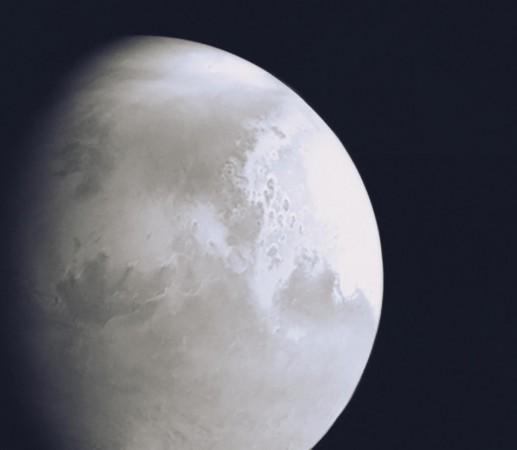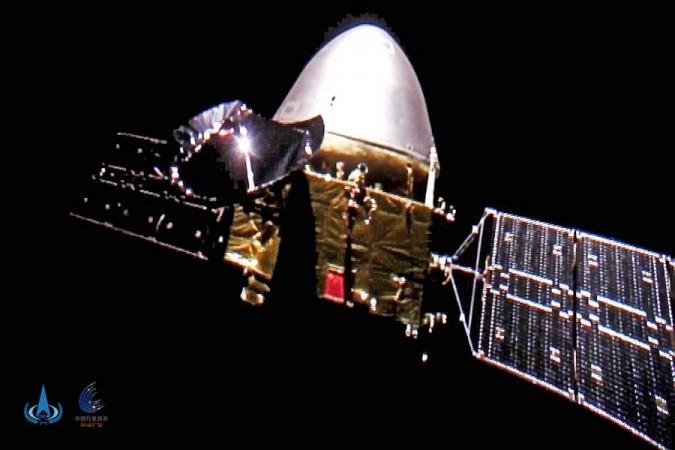
China's space probe Tianwen-1 has sent home the first image of Mars that it captured from a distance of 2.2 million km away from the Red Planet and the China National Space Administration (CNSA) has released the image.
The Chinese mission performed its fourth orbital correction on Friday at 8 pm in order to achieve a planned rendezvous with Mars. The probe has travelled about 197 days in orbit, flying about 465 million km and is currently 184 million km from Earth and 1.1 million km from Mars.
All probe systems are in good working condition, said the CNSA, which had launched the Mars probe on July 23, 2020 on a Long March-5 rocket from the Wenchang Spacecraft launch site in south China's Hainan province. Weighing about 5 tonnes, the Tianwen-1 mission consists of an orbiter, a lander and a rover.

The probe completed its first orbital correction on August 2, its second on September 20 and its third on October 28 last year. It is set to enter Mars orbit on February 10. Once in the Mars orbit, it will survey for three months for potential landing sites using a high-resolution camera. The landing of the rover is likely to be done in the month of May, according to the plan.
Soft Landing on Mars
The most challenging part of the mission will be the soft landing, an autonomous process of the probe lasting seven to eight minutes, according to the CNSA. The probe will use its aerodynamic shape, parachute and retrorocket to decelerate and buffer legs to touch down.

After the landing, the rover will be released to conduct scientific exploration with an expected lifespan of at least 90 Martian days (about three months on Earth), and the orbiter, with a design life of one Martian year (about 687 days on Earth), will relay communications for the rover while conducting its own scientific detection.
Tianwen-1 means 'Questions to Heaven' and comes from a poem written by Qu Yuan (about 340-278 BC), one of the greatest poets of ancient China.











